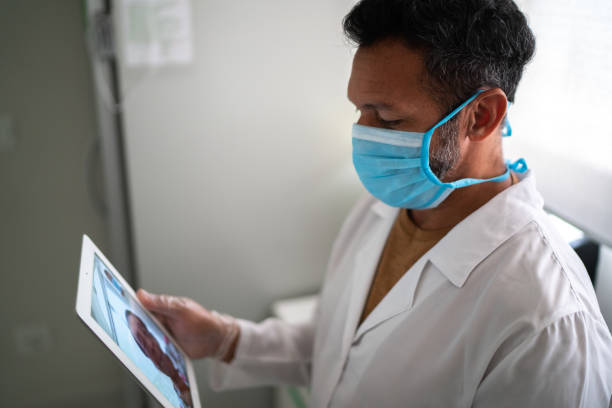Data Security in Patient Monitoring: Ensuring Confidentiality
In the rapidly evolving landscape of healthcare, patient monitoring solutions have emerged as invaluable tools for remote patient care and management. These solutions leverage technology to monitor patients' vital signs, symptoms, and health data in real-time, facilitating proactive interventions and personalized care plans. However, amidst the benefits they offer, ensuring data security remains paramount. In this blog post, we delve into the critical importance of data security in patient monitoring, emphasizing confidentiality and compliance to safeguard sensitive patient information.
Understanding Data Security in Patient Monitoring
Confidentiality: Protecting Sensitive Information

Confidentiality lies at the core of data security in patient monitoring solutions. It entails safeguarding patients' sensitive health information, including medical history, diagnoses, treatment plans, and personal identifiers, from unauthorized access or disclosure. Patient monitoring systems employ encryption techniques, access controls, and secure transmission protocols to ensure that data remains confidential throughout its lifecycle. By upholding confidentiality, healthcare providers uphold patients' trust and comply with regulatory requirements such as HIPAA (Health Insurance Portability and Accountability Act) in the United States.
Compliance: Adhering to Regulatory Standards
Compliance with regulatory standards is non-negotiable when it comes to patient data security. Healthcare organizations must adhere to a myriad of regulations and standards, including HIPAA, GDPR (General Data Protection Regulation), and HITECH (Health Information Technology for Economic and Clinical Health) Act, to protect patients' privacy and rights. Patient monitoring solutions are designed with built-in compliance features, such as audit trails, data encryption, and access controls, to ensure adherence to these regulations. Compliance not only mitigates legal and financial risks but also demonstrates commitment to ethical and responsible data handling practices.
Key Challenges in Data Security
Vulnerabilities in Connectivity
The interconnected nature of patient monitoring systems introduces vulnerabilities in data security, particularly concerning connectivity between devices and networks. Wireless transmission of patient data, while convenient for remote monitoring, increases the risk of interception or unauthorized access by malicious actors. Patient monitoring solutions mitigate these risks by implementing robust encryption protocols and authentication mechanisms to secure data transmission channels.
Data Breach Risks
Data breaches pose significant threats to patient data security, potentially compromising the confidentiality and integrity of sensitive information. Whether due to cyberattacks, insider threats, or accidental disclosures, data breaches can have far-reaching consequences for both patients and healthcare providers. Patient monitoring solutions employ advanced security measures, such as intrusion detection systems, firewalls, and regular vulnerability assessments, to detect and prevent unauthorized access to patient data, minimizing the risk of breaches.
Ensuring Data Security: Best Practices
Comprehensive Risk Assessment
A proactive approach to data security begins with a comprehensive risk assessment to identify potential vulnerabilities and threats. Healthcare organizations should conduct regular assessments of their patient monitoring systems, evaluating factors such as data storage practices, access controls, and third-party integrations. By identifying and addressing security risks proactively, organizations can mitigate potential breaches and safeguard patient data effectively.
Ongoing Staff Training and Education
Human error remains a significant factor in data security incidents, highlighting the importance of ongoing staff training and education. Healthcare providers and staff members should receive regular training on data security protocols, privacy best practices, and compliance requirements. By raising awareness and fostering a culture of security-consciousness, organizations can empower their workforce to handle patient data responsibly and mitigate risks effectively.
Conclusion
In conclusion, data security is a critical aspect of patient monitoring solutions, essential for maintaining confidentiality, ensuring compliance, and preserving patients' trust. By prioritizing confidentiality and compliance, addressing key challenges, and implementing best practices, healthcare organizations can mitigate risks and safeguard sensitive patient information effectively. As technology continues to advance and healthcare delivery evolves, robust data security measures will remain paramount in safeguarding the integrity and privacy of patient data.
This blog post provides a comprehensive overview of data security in patient monitoring solutions, emphasizing the importance of confidentiality, compliance, and best practices to mitigate risks effectively. Through detailed paragraphs and structured headings, the content explores key concepts, challenges, and strategies for ensuring data security in the evolving landscape of healthcare.



Comments
Post a Comment